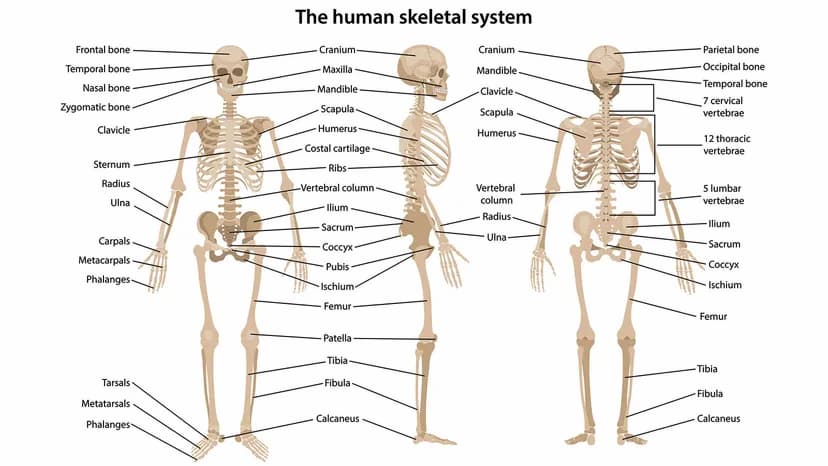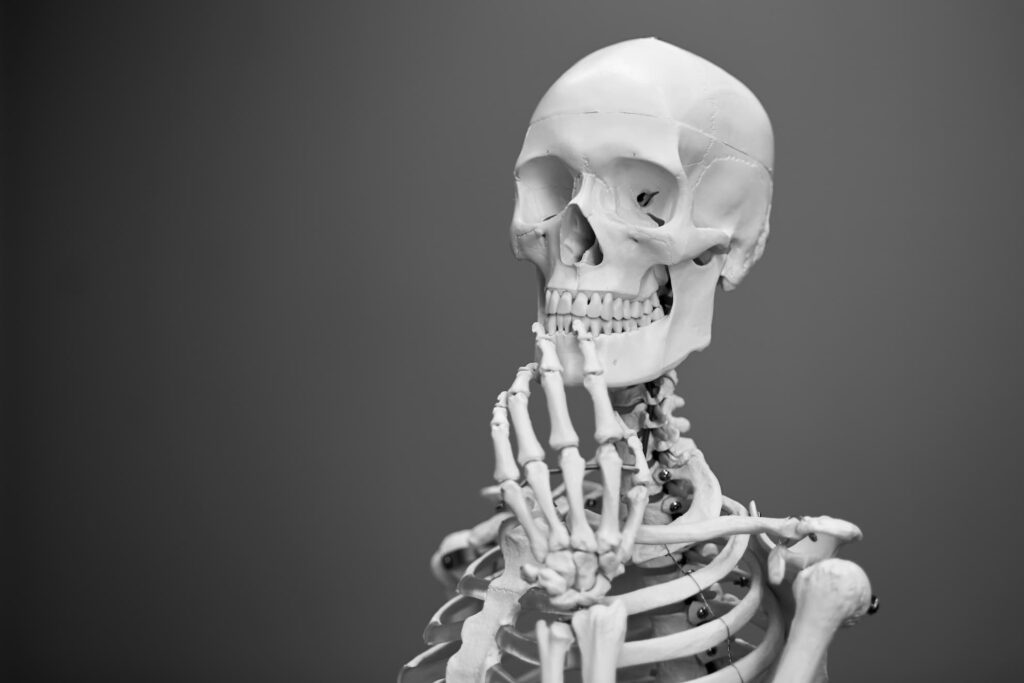Marvels of the Human Skeleton
Unveiling the Marvels of the Human Skeleton: A Comprehensive Journey into Bones and Their Fascinating World
The human skeleton, a marvel of engineering and evolution, forms the foundation of our body, providing support, protection, and enabling movement. Comprising 206 bones at birth, which later fuse to 206-213 in adulthood, the skeleton is a dynamic and intricate structure that undergoes constant remodeling throughout life. In this article, we will embark on a captivating journey to explore the anatomy, functions, and intriguing facts about the human skeleton.
Anatomy of the Human Skeleton:

Axial Skeleton:
- Skull: The skull, housing and protecting the brain, is a complex structure with 22 bones, including the mandible and maxilla.
- Spine: The vertebral column, consisting of 33 vertebrae, provides support and protects the spinal cord, allowing flexibility and movement.
- Ribs and Sternum: The rib cage safeguards vital organs like the heart and lungs, and the sternum anchors the ribs, forming the thoracic cage.
Appendicular Skeleton:
- Limbs: The upper and lower limbs connect to the axial skeleton through the pectoral and pelvic girdles.
- Pectoral Girdle: Comprising the clavicle and scapula, it supports the arms and provides a range of motion.
- Pelvic Girdle: The pelvis, formed by the ilium, ischium, and pubis bones, supports the lower spine and protects reproductive and digestive organs.
Functions of the Human Skeleton:
Structural Support:
- The skeleton provides the framework that supports and maintains the body’s shape.
- It enables us to stand upright, facilitating balance and coordination.
Protection: Bones act as a protective shield for vital organs. For instance, the skull protects the brain, and the rib cage safeguards the heart and lungs.
Movement: Joints, where bones meet, allow for a wide range of movements, from simple actions like bending the elbow to complex activities like dancing or playing sports.
Blood Cell Production: Red and white blood cells are produced within the bone marrow, contributing to the body’s immune system and oxygen transportation.
Mineral Storage: Bones store essential minerals, including calcium and phosphorus, regulating their levels in the bloodstream.
Bone Composition and Structure:
Composition: Bones are composed of organic and inorganic components, with collagen providing flexibility and minerals, such as hydroxyapatite, offering strength.
Bone Tissue Types:
- Compact Bone: Dense and solid, forming the outer layer of bones.
- Spongy Bone: Less dense, with a porous structure, found at the ends of long bones and in the interior of flat and irregular bones.
Bone Cells:
- Osteoblasts: Responsible for bone formation.
- Osteocytes: Mature bone cells embedded in the bone matrix.
- Osteoclasts: Break down and reabsorb bone tissue during remodeling.
Bone Development and Growth:
- Embryonic Development: The skeleton initially develops as cartilage, gradually ossifying into bone during fetal development.
- Childhood Growth: Long bones lengthen through endochondral ossification, occurring at growth plates.
Bone Remodeling: Throughout life, bone tissue is constantly broken down and rebuilt in response to stress, injury, or changing functional demands.
Common Bone Disorders and Diseases:
- Osteoporosis: Characterized by reduced bone density and increased risk of fractures, often associated with aging.
- Arthritis: Inflammation of joints, affecting the cartilage and causing pain and restricted movement.
- Osteoarthritis: Degeneration of joint cartilage and underlying bone, leading to pain and stiffness.
Fun Facts about the Human Skeleton:
- Bone Marrow Donation: Bone marrow transplants can treat various diseases, and individuals can register as donors to save lives.
- Smallest and Largest Bones: The stapes bone in the middle ear is the smallest, while the femur, or thigh bone, is the longest and strongest in the body.
- Babies and Adult Bones: Babies are born with approximately 270 bones, which fuse to form the 206-213 bones in adults.
Conclusion:
The human skeleton is an extraordinary testament to the complexity and adaptability of the human body. Its intricate design, coupled with the continuous growth, remodeling, and adaptation processes, allows us to navigate the world around us. Understanding the anatomy, functions, and fascinating facts about our bones deepens our appreciation for the marvels of human biology. It underscores the importance of maintaining bone health throughout our lives. So, the next time you stand, move, or even consider bone marrow donation, remember the incredible intricacies and wonders that lie within your skeleton.



